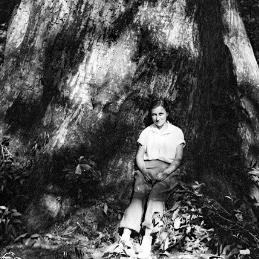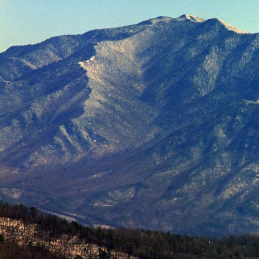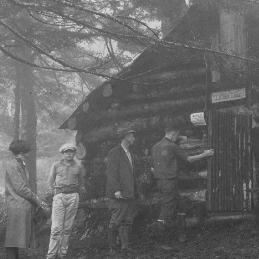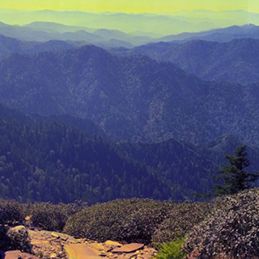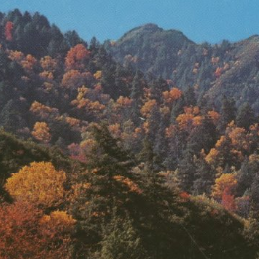Browse
"War Below the Canopy." National Parks 81, no. 1 (2007): 28-33.
Beech Bark Disease Monitoring Protocol for Great Smoky Mountains National Park. Gatlingburg, TN: U.S. Department of the Interior, National Park Service, 2006.
Ginseng, the Divine Root. Algonquin Books of Chapel Hill, 2006.
Hike Your Own Hike: 7 Life Lessons from Backpacking Across America. SonicTrek Press, 2006.
"Hill Cane (Arundinaria Appalachiana), A New Species of Bamboo (Poaceae: Bambusoidead) from the Southern Appalachian Mountains." SIDA, Contributions to Botany 22, no. 1 (2006): 79-95.
"Impact of Tunnel Reconstruction on Stream Water Quality in Great Smoky Mountains National Park." Journal of Hydrologic Engineering 11, no. 6 (2006): 570-577.
"Natural History and Distribution of the Enigmatic Southern Appalachian Opilionid, Fumontana deprehendor Shear (Laniatores: Triaenonychidae), with an Assessment of Morphological Variation." Zootaxa 1242 (2006): 21-36.
North Carolina. 4th ed. Fodor's Travel Publications, 2006.
"Notes on Botryolepraria lesdainii in North America." Evansia 23, no. 2 (2006): 34-35.
"Ozone and PM2.5 Exposure and Acute Pulmonary Health Effects: A Study of Hikers in the Great Smoky Mountains National Park." Environmental Health Perspectives 114, no. 7 (2006): 1044-1052.
"The Salamanders Eurycea longicauda and Plethodon glutinosus in Gregorys Cave, TN: Monitoring and Observations on Ecology and Natural History." Southeastern Naturalist 5, no. 3 (2006): 435-442.
Spirits Dark and Light: Supernatural Tales from the Five Civilized Tribes. August House, 2006.
"Use of Wildland Fire in Great Smoky Mountains National Park." In Fire in Eastern Oak Forests: Delivering Science to Land Managers, Proceedings of a Conference; 2005 November 15-17; Columbus, Ohio, edited by Matthew B. Dickinson, 273. Newton Square, PA: U.S. Department of Agriculture, Forest Service, Northern Research Station, 2006.
Walkin' with the Ghost Whisperers: Lore and Legends of the Appalachian Trail. Xlibris Corp., 2006.
"Effect of Ambient NH3 Levels on PM2.5 Composition in the Great Smoky Mountains National Park." Atmospheric Environment 39, no. 25 (2005): 4593-4606.
"Estimated Ultraviolet Radiation Doses in Wetlands in Six National Parks." Ecosystems 8, no. 5 (2005): 462-477.
"Estimated Ultraviolet Radiation Doses in Wetlands in Six National Parks." Ecosystems 8, no. 5 (2005): 462-477.
"A Labor of Love." National Parks 79, no. 3 (2005): 42-48.
"Leioderma Cherokeense (Pannariaceae, Lecanorales) sp nov. From the Great Smoky Mountains, North Carolina, USA." Bryologist 108, no. 3 (2005): 412-414.
"Managing Hemlock Woolly Adelgid and Balsam Woolly Adelgid at Great Smoky Mountains National Park." In Third Symposium on Hemlock Woolly Adelgid in the Eastern United States, 232. Asheville, NC: U.S. Forest Service, 2005.
"Natural Background Visibility and Regional Haze Goals in the Southeastern United States." Journal of the Air & Waste Management Association 55, no. 11 (2005): 1600-1620.
"Using Scenarios to Assess the Impact of Air Pollution in the Great Smoky Mountains National Park." Public Works Management & Policy 10, no. 2 (2005): 170-185.
"Associations Between Causal Agents of the Beech Bark Disease Complex [Cryptococcus fagisuga (Homoptera: Cryptococcidae) and Nectria spp.] in the Great Smoky Mountains National Park." Environmental Entomology 33, no. 5 (2004): 1274-1281.
Brook Trout In Great Smoky Mountains National Park Management Folio ; 6. Gatlinburg, TN: Great Smoky Mountains Association; National Park Service, 2004.
"The First Nearctic Leaf Litter Flea Beetle (Coleoptera: Chrysomelidae) from the Great SmokyMountains National Park." Coleopterists Bulletin 58, no. 1 (2004): 71-76.




